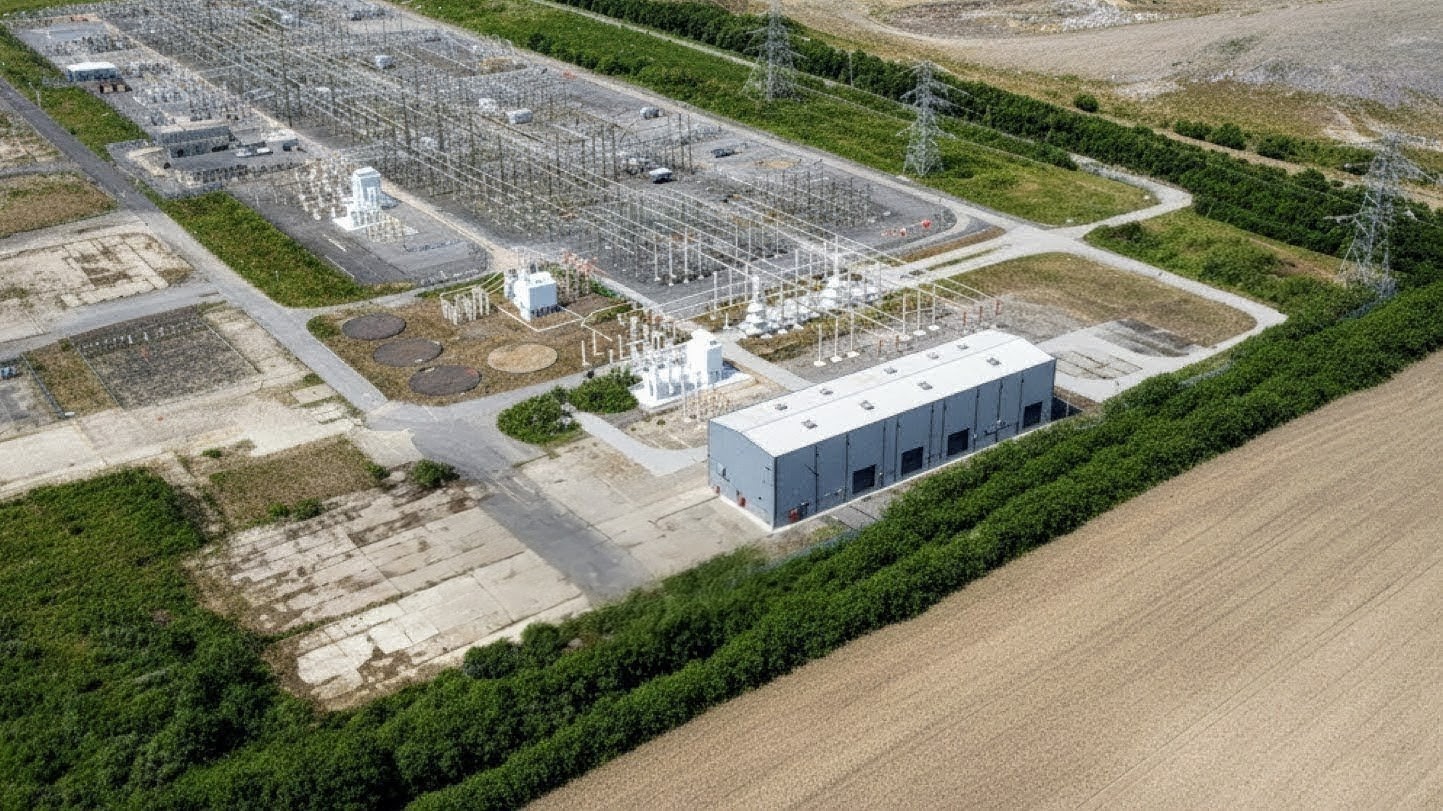
National Grid kicks off Didcot substation upgrade to connect data centres and battery storage
- Didcot 400kV substation extension and new 132kV facility to help power Oxfordshire’s digital future
- From coal to clean: 650MW of battery connections will boost grid flexibility
- Latest SF6-free switchgear ensures technology is sustainable and resilient
National Grid has started work to upgrade its Didcot substation in Oxfordshire, a key infrastructure development that will connect data centres and battery energy storage systems to the electricity transmission network.
Situated next to the former Didcot A coal power station and just two miles from the UK’s first AI Growth Zone at Culham, the upgraded substation will support Britain’s digital ambitions while boosting grid capacity for future projects to plug in.
Alongside new data centres, 650MW of battery schemes will connect through the extended facility, completing a transition from ‘coal to clean’ at the site and helping to meet growing demand for flexible, zero carbon power in the region.
The upgrade will see the existing 400kV outdoor air-insulated substation extended with three bays and three supergrid transformers, while a new 132kV indoor gas-insulated switchgear (GIS) facility will be built next door – minimising the footprint of the development and its impact on the environment.
The new GIS facility will feature Hitachi Energy’s EconiQ switchgear technology, a sustainable alternative to sulphur hexafluoride (SF6) – a greenhouse gas commonly used as an electrical insulator – marking another step in National Grid’s commitment to reduce SF6 emissions from its network by 50% by 2030.
Linxon has been appointed as principal contractor to deliver the substation upgrades, building on its successful collaboration with National Grid on projects such as London Power Tunnels, which will see the UK’s first SF6-free GIS substation at Bengeworth Road.
Work at Didcot comes just months after construction commenced on National Grid’s new Uxbridge Moor substation in neighbouring Buckinghamshire, which is due to connect over a dozen new data centres and which will also use SF6-free switchgear.
Peter Hancock, project director at National Grid Electricity Transmission, said:
Our Didcot substation extension marks another step forward in powering the UK’s digital future. By enabling new data centres and battery storage systems to connect to the grid, we’re supporting both the energy transition and the growth of the digital economy regionally and nationally. And with SF6-free technology at its heart, this project reflects our commitment to building a cleaner, greener electricity network for generations to come.
Angel Guijarro, managing director of Linxon Europe, said:
Linxon’s appointment to this project is a testament to our strong partnership with National Grid and our shared vision for a sustainable energy future. We are committed to delivering a turnkey solution that will enhance the reliability and efficiency of Didcot substation, benefiting both local and national communities.
Electricity demand in Britain is expected to double by 2050, with demand from data centres alone set to triple from 3% of the country’s total in 2025 to 9% by 2035.